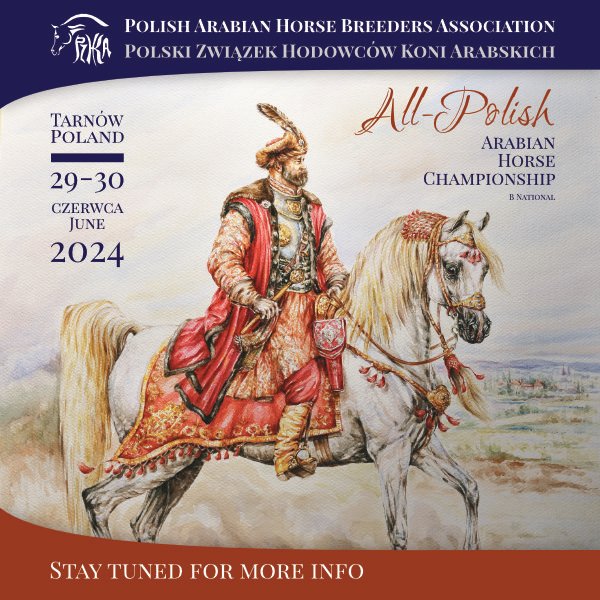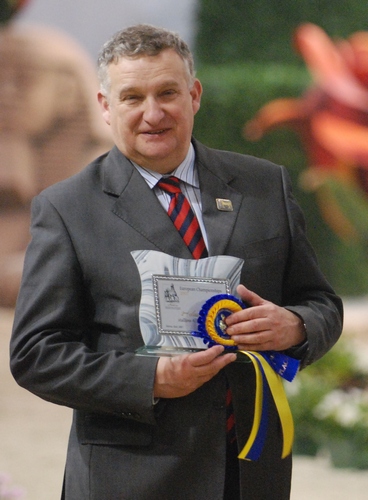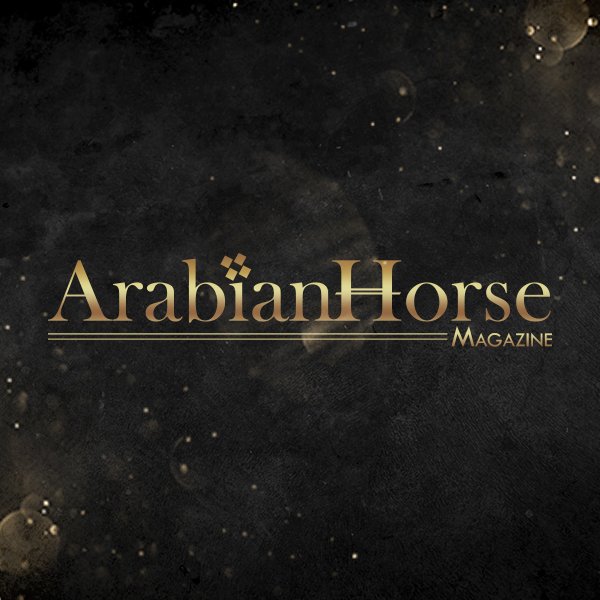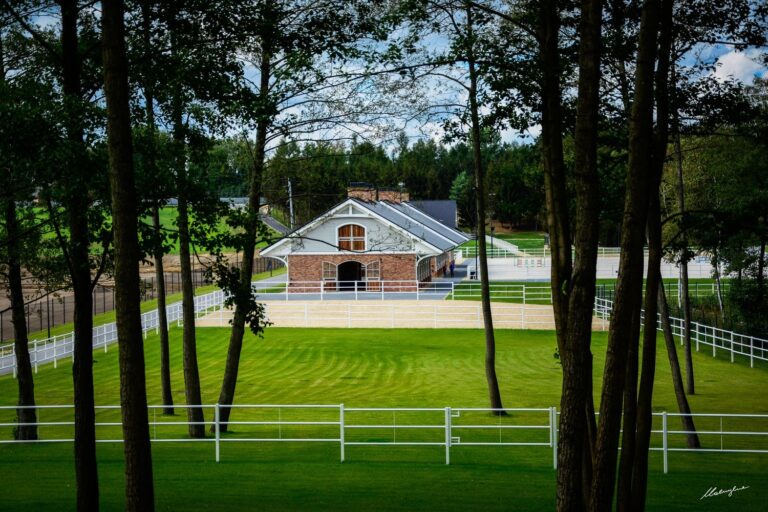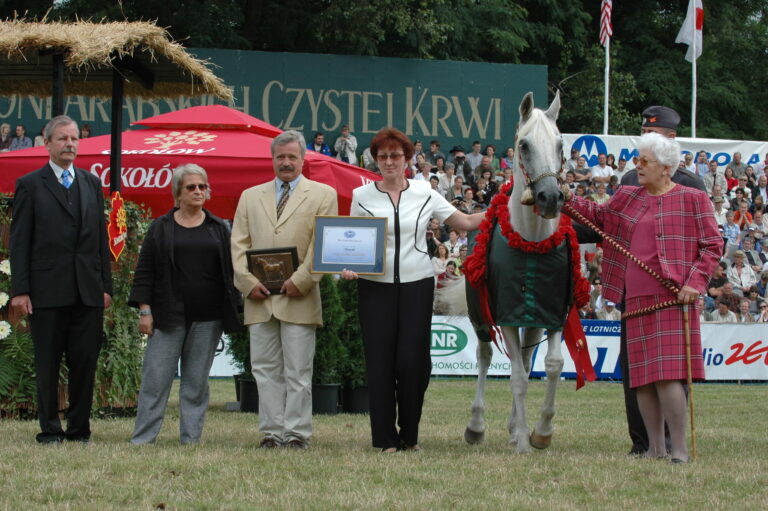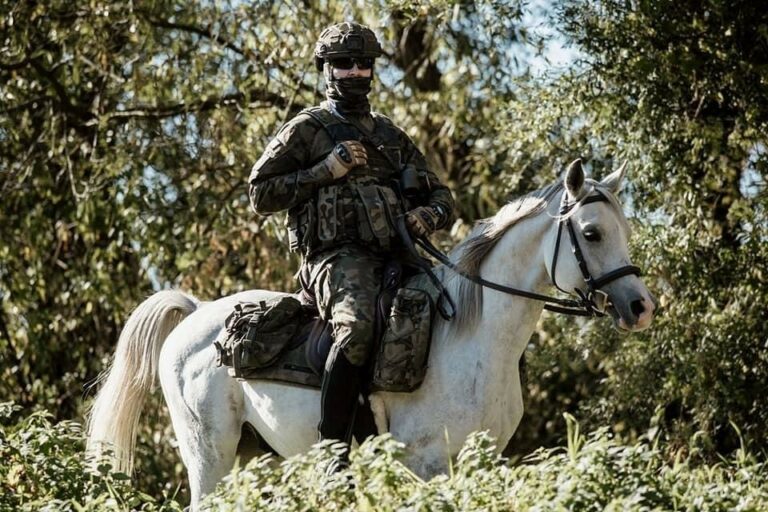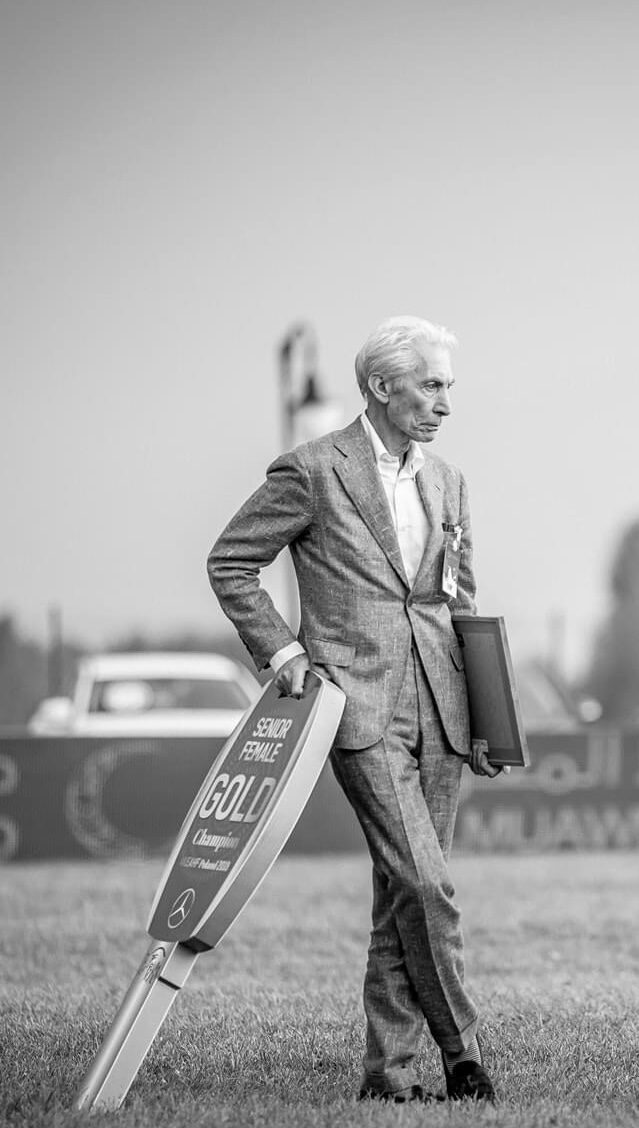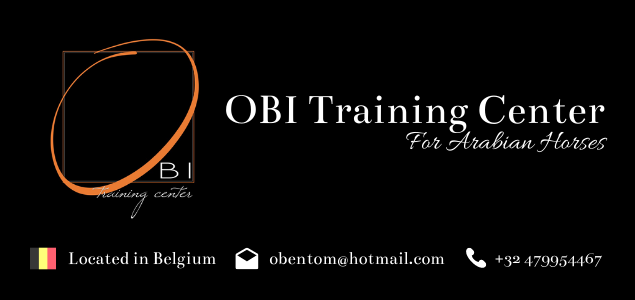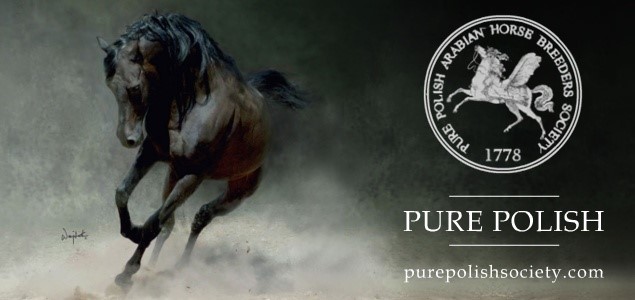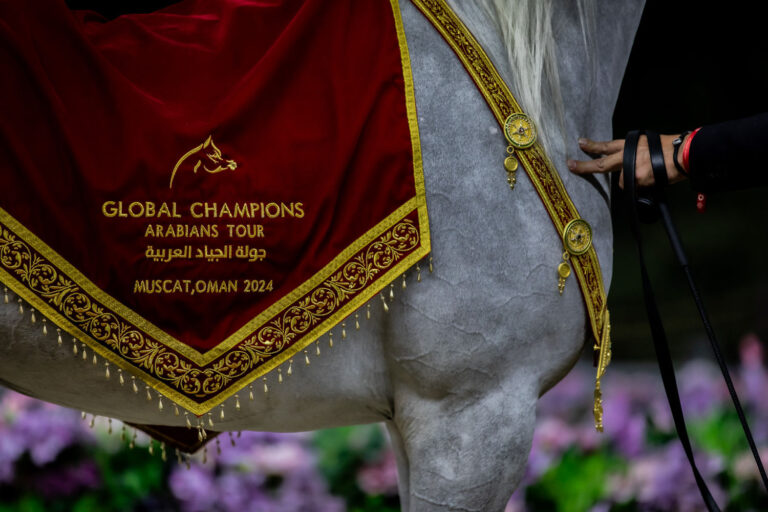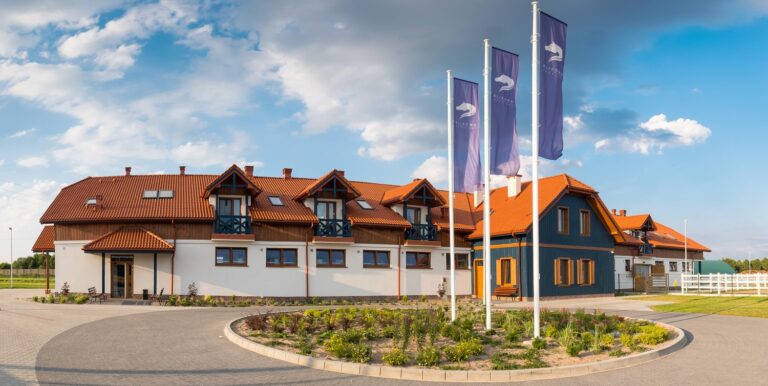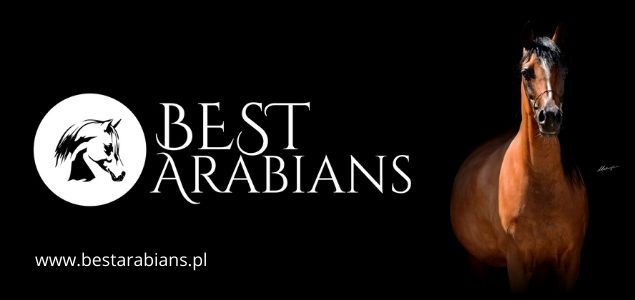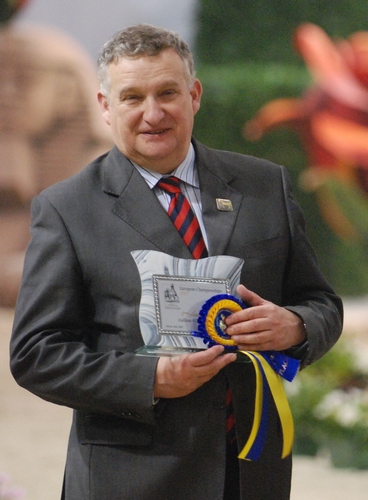
Director of Michałów State Stud, JERZY BIAŁOBOK, has been linked to Michałów since the beginning of his professional career. He has gone through all levels of breeding work and has also been a presenter (he showed Penitent, among others). In 2007 he celebrated the 30th anniversary of his professional career and at the same time of his work at the stud, which in turn is celebrating its 55th anniversary. An international judge and unquestionable authority among the world of Arabian horse breeders in Poland and worldwide. His name is synonymous with the remarkable success of Polish breeding.
Monika Luft: Do you sometimes happen to make mistakes? Regret that you sold this or that horse?
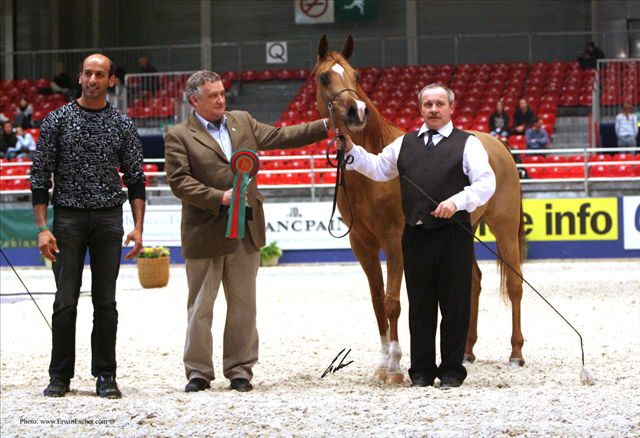
Jerzy Białobok: To make mistakes is part of human nature and I suppose I don’t diverge much from the standard norm… Breeding in general is a history of mistakes and some successes. There is no path to success without errors. And sometimes I do regret the horses! For example due to the sentiment I hold for them. I had a huge sentiment towards Kwestura and I still regret selling her. On the other hand I knew very well that her time had come. And that this time is today and not tomorrow. In our history we had horses whose time had come and it was not used. It doesn’t come again – people who were interested change their minds, find other horses… So on one hand I feel great sorrow, but on the other we cannot part only with horses of a lesser category – sometimes you have to take something off this pyramid and part with a Kwestura or an Emigrant.
M.L.: When a foal is born do you already know: this one will be a show horse and this one will be sold?
J.B.: If I’d say so it would attest to huge conceit or even arrogance, and I am a stranger to both. Although it is also true that in the first 10 hours after birth you can tell whether it will be a good, promising foal and whether the sire fulfilled our expectations. When the foal stands up, you can assess his proportions. After that the foals become furry like kittens, especially when it is cold. It is then hard to evaluate the outline of the head, though the length of the hair has no affect on the length of the neck.
M.L.: Do you sometimes experience jealousy? It’s a pity that it wasn’t me who thought of such a mating… A pity that I didn’t appreciate this or that stallion…
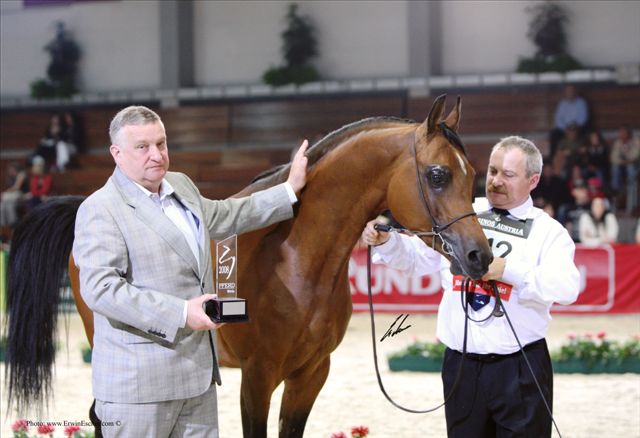
J.B.: Two sisters bred to the same stallion produce completely different foals, so sometimes you can come up with the same idea and have a totally different effect. It just makes me happy that a good foal has been born and I ask myself what makes him so good, what had clicked so well in the second, third or fourth generation. I wonder if I can use the same combination at my stud. No, I wouldn’t call it jealousy. Rather happiness that we will be able to watch that foal later at the shows. The shows give the best possibility to evaluate and observe.
M.L.: If you had absolute freedom of choice, unrestricted, which stallion would you bring to Michałów?
J.B.: The shows convince me more and more that there is a total void in the case of stallions. There are no dream stallions. I have just scanned an article in the ARABY magazine about Nabor and Negatiw… When you look at old photographs of epochal stallions like Witraż, Ofir, Wielki Szlem, Nabor, you have an impression that we would not use them nowadays. And if we went with them to a championship we could suffer a great disappointment. So a lot has changed… But it was those stallions which gave exquisite daughters who were very successful, when 30 years ago we began comparing ourselves with the rest of Europe. The first championship, where Estebna was the winner, in 1973 in Germany, was won by Nabor daughters! Without a doubt the product of these not especially handsome stallions was superb.
I personally had an inclination toward three stallion comebacks, but I was hindered by women… I wanted to return to Penitent, because I believed that among the stallions of this line he was the best – for example he gave us Kawalkada. I believed that this horse suited the Michałów mares very well. Mrs. Fischer received this horse as a birthday present from her husband and practically after his first showing he was withdrawn from an active participation in the Arabian horse world. Still we tried to bring him here, but Mrs. Fischer stated that the horse is a member of the family and that she does not want to lend him. The second time we also met with a refusal. It was the same with Monogramm, who I wanted to bring to Poland twice, something I spoke about with both Mrs. Bishops – mother and daughter. Please note that Monogramm’s progeny is practically not present in the US! There are about 3 thousand horses in the Scottsdale show catalogue – and only rarely do we find any Monogramm descendants. He had quite a few problems with reproducing, but we wanted to bring him here for a very good retirement, even without any guarantee for success. His semen was poor, but we were hoping that there would be a chance of success. It’s a pity that this did not come to be, because I think that he would still do great service for Polish breeding.
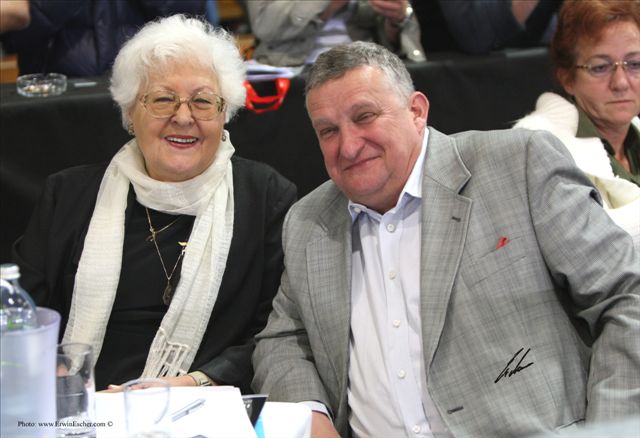
And third was Menes. We saw this stallion together with Mrs. Zawadzka long ago, when the company of Animex still existed. He appealed to us very much, him and his first-bred mares (the same dam line as Monogramm), but Sasza Ponomariew of Tersk strongly resisted, claiming that he needs the stallion at home. He probably already had an offer from the US – seemingly for 3 million dollars – and surely this tremendous sum was the reason for the refusal and not (as he said) “you will cheat us again, just as with Nabor and Negatiw.” Later it turned out that God is just, only works in his own time, and made it up to us with the lease of Tallin and Pesennik, which was arranged by Director Jaworowski and Mr. Budny. Pesennik was chosen because of his racing career, but if not for Pesennik there would be no Kwestura! We in turn sent them (among others) Gwizd (by Probat) and the much marked chestnut Harfiarz, who had very poor semen. But Sasza claimed that it is definitely not true about the poor semen, but that once again we want to cheat him. In order to not start a diplomatic conflict we were delegated to again collect the semen. The results were similar, but they took him anyway, bred 20 mares, out of which 2 or 3 conceived and the story was that we apparently cheated them once again…
If we could turn back the hands of time, then Eukaliptus gave splendid results. On the other hand Michałów never had any sentiment for Bandos. I remember the inspection in Janów, where there were 16 Bandos’ daughters among the 1st category of mares! While in Michałów he was not successful at all.
A dream stallion…? I still dream that I will be able to find a stallion with the positive traits of Monogramm and Gazal. And on top of that he would be grey. I am still searching. Despite the sporadic usage of Egyptian stallions I believe that we should continue the Polish lines, especially male, that would be pure to the some degree. Though it is difficult, because the competition standards have been raised extremely high. And not all of our stallions (though they give a lot of positive traits when it comes to conformation and length of neck) pass on the porcelain-like finesse head, so desired by the judges today. In turn our horses collect high marks for the body, legs and movement.
M.L.: Are the rumors about the selling of Ekstern true?
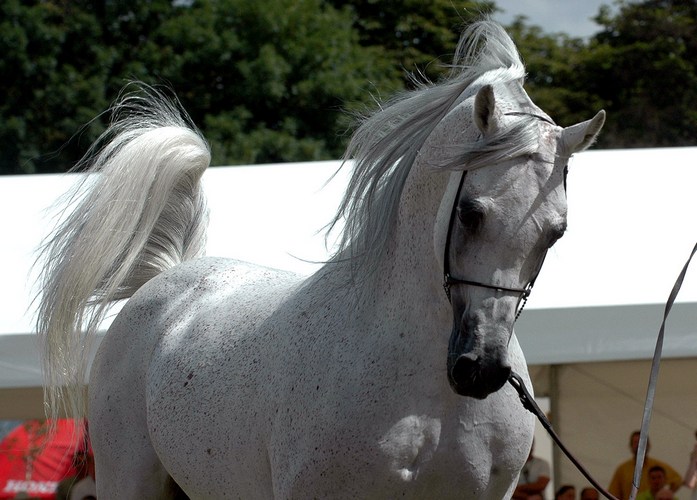
J.B.: Everyone seems to think so… The decision was already made two years ago, but after long consideration and discussion with my colleagues I decided that it was a bit too early. We, just like Europe, suffer a lack of stallions. In my opinion, because there is a limited number of recipients, stallions should be sold at the time of the auction, but in the form of negotiating. That is much safer, because a high quality stallion should not go off the arena unsold. That was the case with the selling of El Paso – at the time of the auction, but beside it. The negotiations with Armand Hammer were brief. Everyone thought that he would laugh at the price – while he accepted it in a blink of an eye! The horse was already proven in Poland and he did not cover a lot after his return from the US because he really had nothing more to do. Such stallions should be sold in the form of negotiations. All veterinary documents are also available to the buyer (sometimes older stallions can have a lower fertility). There is no need to spread this if the buyer knows what he’s in for.
M.L.: So Ekstern will not be Lot A of this year’s jubilee auction?
J.B.: I don’t think so. Besides, the time has come to cool the atmosphere around the auction and the atmosphere of the auction itself. The current market crisis also affects this. Since the time of the Americans’ large purchases, who raised the price standard extremely high (we all remember Palestyna or Elandra), there were no more of such buys. Since the last two years’ that market is blocked. It began moving towards the Middle East and Belgium. Of course Mrs. Watts also – if she wants to buy something – is very effective. But there can always appear another person, say from Bali… We don’t know why comets fall. Sometimes something unexpected happens – someone, who actively raises the level of the auction – two years ago it was for example Dubai.
M.L.: Is breeding today simply a matter of large amounts of money? You will always get something from buying breedings to the most expensive, trendiest stallions.
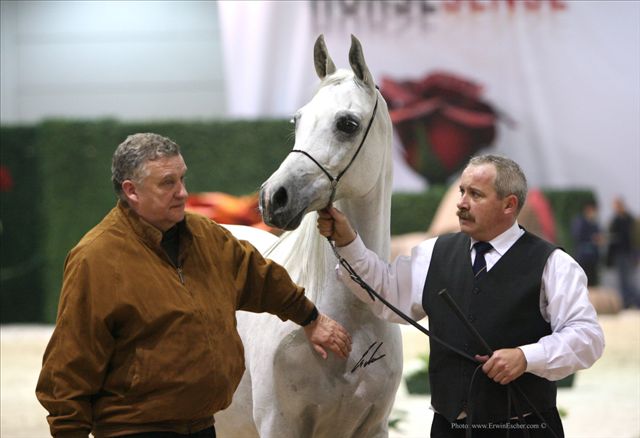
J.B.: No, I think that most important still is the concept and attitude towards breeding itself: we have to ask ourselves what exactly do we want to achieve? Sometimes from very mediocre mares we can get very good foals. The point is to choose the right stallion. Of course there was a moment when many people in Poland believed that breeding and selling of Arabian horses will quickly make them wealthy. The first private purchases were made in foreign currency (for example by Stanisław Duda, who had the first large private stud near Staszów). As we know today, it wasn’t that simple. Many studs rather quickly – and some quite painfully – ended their existence. However it is true that the breeding of Arabian horses on a larger scale (about 10 broodmares) is a hobby for the wealthy, because it is expensive – the keeping of the horses, finding the right stallions and participation in shows. Though I believe that it all depends on the goals which are set. It can be done purely for pleasure. I like the view presented by Professor Strumiłło: he draws colossal pleasure from his breeding! Due to organizational issues he always leases a stallion, doesn’t bring in semen to his stud and yet he has managed to breed some rather decent foals. He is deeply affected by the performances of his graduates. He has made himself comfortable in this breeding and feels no discomfort just because he is not using the most trendiest stallions of the moment. Of course there are people whose immodesty pushes them to breed a champion in a short time. They think that they deserve it and that all those adversities, like judges’ verdicts, horse injuries or diseases, trainers and handlers which show their horses in a bad way, occur just to spite them. But just as there are fanatic dog breeders, which go crazy during shows, there are similar Arabian horse breeders. However please note that the chestnut yearling colt which beat Kabsztad, Ali Moniscione, was born in a small stud. I believe that small breedings, run with common sense and a concept, a goal, without any mumbo-jumbo in the likes of “he’s trendy, so I’ll breed to him” and a moment later breeding to some other fashionable sire, where there is a consistency in breeding, you can achieve successes quicker, than in a place where just money is spent.
M.L.: There is also a second side to the story. We all observe with horror the “multipliers” of horses, who cover poor mares with poor stallions. Quite often a terrible fate awaits the products of these matings…
J.B.: It is the aftermath of what we have done ourselves. Arabian horse breeding has become common. Earlier it was a forbidden fruit, though I have never found a rule which would prohibit the selling of Arabian horses to private persons. However, though unwritten, the rule inured. But there was also not many who were willing to do it – beside Zygmunt Braur and Anna Dębska, there was also Andrzej Ou and not many others. Some of them, when it became possible, began buying these horses and reproducing them, not thinking about what to do later with them. The breeding fees were not high and are not elevated even today, to encourage people to breed to fairly good stallions. Nevertheless there were a few moments when a lot of horses found their way onto the uncontrollable market, for example during the liquidation of Kurozwęki Stud. Later fell “Tarus”, as well as some private breedings (among them that of Mr. Redestowicz). The market had then saturated very much. And many breeders treated the covering of mares as compulsory – if you have a mare, you have to breed her. Meanwhile during the last couple of years the standard has been raised high very rapidly. When the Arabic countries were enrolled into ECAHO, the European shows saw entries of horses owned by the Middle East. And these owners, wanting to win, penetrated the markets of mainly the US and Brazil and bought out the best horses. Suddenly we had to clash with the best horses of the entire world’s crop! And so on one hand the quality of our breeding rapidly rose, but on the other this breeding became more and more common and accessible. And when something becomes common it loses on quality. And a question appears: where are we heading? The simplest criteria of selection is that unfortunately horses which are not good enough for breeding should be intended for slaughter. For many people such a conclusion comes as a complete shock. The market of recreational or sport horses will eventually absorb these horses, but it needs animals of 4 years of age. Until then the horses have to be kept and fed, so the cost of keeping will twice or three times exceed the value of the sold animal. In articles on the subject we find implied questions: Who is responsible for this? Who is guilty? Unfortunately the answer is: the breeders themselves! You can predict the behavior of the market to a certain degree. It is not capable of accepting so many horses! Even if we would designate 70 horses for the auction and another 70 for the Silent Sale, we would still sell the same amount as now. The absorptivity of the market is limited. But with many young people, who think that each born Arabian is a good horse because he has a pedigree up to a certain number of generations, the brutal truth simply doesn’t sink in. In the meantime they are pretty, ugly, sometimes totally bad. Some lines are simply less handsome or genetically weaker and are selected out of the breeding herd. Otherwise we would decrease the overall quality of the entire breeding. Because exceptional horses have to work for the weaker ones. 25 superb horses will not keep a herd of 100 mares. This balance of the market has unfortunately been disrupted and now we have an overproduction of Arabian horses. And true breeding holds no sentiments, they are only a disturbance during selection. It is up to the market whether it will accept a horse not incorporated into breeding as a performance horse or a slaughter horse.
I remember how this inner pressure was upset in Kurozwęki a couple of years before its liquidation. First it was 40 horses, in a moment 50, then 70… The horses began having worse and worse conditions and their quality greatly lessened, because too little of them were sold or eliminated. But I also remember the first inspection, when Białka received 20 selected horses from Kurozwęki (some went to Tarus Arabians) and suddenly our breaths were taken away… Because horses are perceived depending on the background. And suddenly Białka’s mares formed a background for the selected Kurozwęki herd – daughters of Eukaliptus, Banat… Everyone was thunderstruck, because it was just the peak of the iceberg. That’s why those decisions, which sometimes have to be made, are not completely understandable for people from the outside. If you want to save something larger, you have to sacrifice something else, and certainly constantly monitor the amount of owned animals.
M.L.: How do you imagine Polish breeding in 50 years’ time?
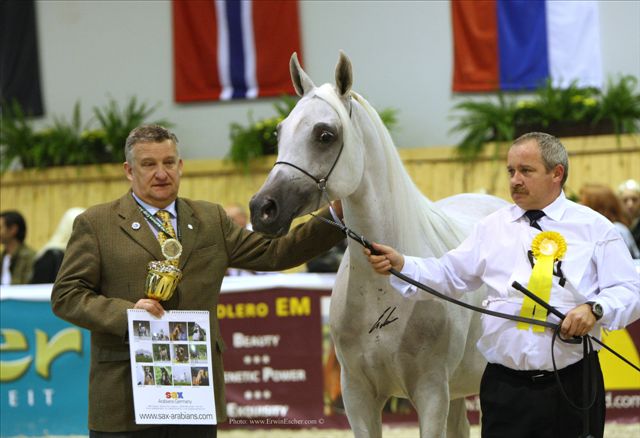
J.B.: It is very hard to predict, especially in such a quickly changing environment. But horse breeding is connected to the economy. So I think that the herd will not grow ten times as large. We will not have 20 thousand broodmares. The economy will force people to a more strict selection. Perhaps there will be even 200 or 300 breeders, but there won’t be more than 2000, 4000 mares. Definitely the quality will rise. People who ride are convinced that Arabians are not very much suitable for recreational riding, because they are small, timid, have a short gallop… So it is not a horse which will flood the recreational market. It’s a bit like with dogs – people like large-framed horses. The smaller the person, the bigger the dog tussles at the end of the leash. And so a new market will not open – neither in Europe, nor in the Middle East, because they have their own production there. Mr. Tadeusz Rusiecki, who believed that he would sell horses to the Oman cavalry and who stayed a pleasant general, unfortunately failed in his calculations. The market for mediocre and medium horses, which are about 60-70% of the crop, will be small. Studs will fall. The largest rotation always takes place among the breeders. A breeder with a 20 year history is a rarity, even in the US! Except maybe for Raymond Mazzei there are no breeders with such a record. I don’t think that we will see studs which will grow to be 50-60 years old. It is highly unlikely, also because the next generation is rarely interested in the same thing in which the parents are. They usually want to do something different. And will state breeding still exist? I don’t know, it should survive in one form or the other, perhaps as one or two studs, maybe resembling the German system as regional studs.
M.L.: What meaning does tradition have? The memory about the actions of the predecessors? Their experiences? Or perhaps it is the same as with computers: today we have a completely different era and the knowledge of former generations doesn’t apply?
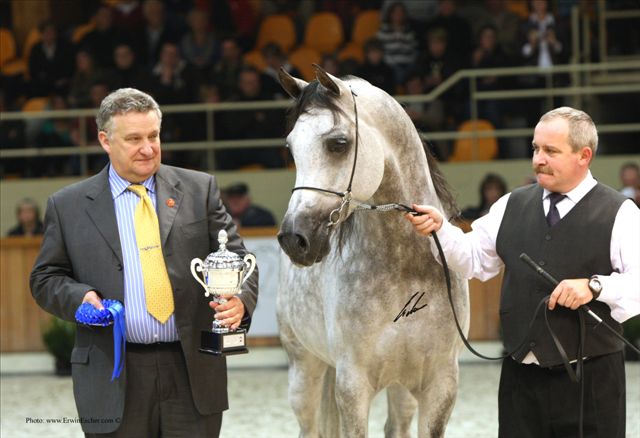
J.B.: Horse breeding is a typical activity of experimenting and observing. No text book will tell you how to breed horses. Sure, there are guidelines about the necessary conditions so that the animals can live, reproduce and undergo training. But nowhere it is told how to breed good horses. Because this comes from the ability to observe and self-criticize. The best system, thought up already during the times of the Austro-Hungarian empire when studs were being established, is this: two people should take care of the breeding – the breeder and stud director. This system relied, and still relies, on continual discussions, the forcing of own ideas, but because no one is infallible it is worth to consult these concepts. Sometimes the seemingly poor idea turns out to be the best after a close analysis. I pleasantly reminisce the times of setting up the breeding plan when I was a trainee and later a breeding assistant. Director Jaworowski, Urszula and I sat down together around November. There were 4-5 of such meetings. Everyone was obliged to come with their own breeding plan. We discussed whether to choose this or that stallion, this one will be just for one season and we cannot repeat the mating, that one will be here for two seasons, we can wait… The plan was created in huge labor, everyone had doubts, no one was totally convinced, though usually this plan overlapped in about 80% and differed only in detail. Horse breeding is more of a group activity than an individual feat. The ideas that come to mind have to be later brought to life. And these results have to last. If there is no bond between the breeding and the stable, groom, then nothing will come out of it all. Because life throws at you unexpected events, diseases, which take away the most valuable individuals. Breeding does not pat us on the head, but teaches humility towards death and that we can suddenly lose that which we had the most hopes for… We lost the best daughter of Laheeb on the first day of letting out onto the pasture…
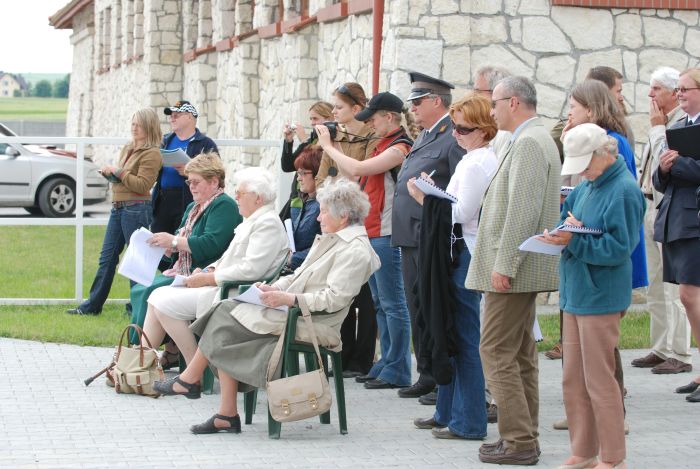
We have managed to develop this system, or rather continue it. This kind of work can be done by one person only in small studs. If there is more than 20 mares it is hard to have control over it. When you are working on the breeding plan you have to literally see both the mare and the stallion, have both images overlap each other. I must admit that it is easier for me to speak about this with people of an artistic view, because they see those things, it is easier for them to notice details. Someone who is not a thorough observer will never be a good breeder. This is not in the text books, you have to have the ability to remember the details of the horse, fragments of his conformation, to make the right decisions. Not everyone is suitable for this job. But these skills develop over the years. When I was younger I sometimes felt that nothing good will come out of a given mating, but it was difficult to explain why… Intuition. I miss the old inspections, which were closed. Today when everyone can participate in a stud inspection the breeders have become more discreet, they don’t want to speak of certain things publicly, which is understandable. But the discussion suffers. Those old inspections were better for the education of the young breeding staff. It’s just as among the actors: the young often learn from looking at the attempts of the old – without the viewers.
M.L.: How do you feel about the modern breeding problems? For example embryotransfer?
J.B.: I am in favor of embryotransfer. Two years ago at the Polish Arabian Horse Breeders’ Society annual meeting I suggested the possibility of starting this procedure in Poland, but two private breeders strongly opposed. There was one objection: this is impossible, because then Janów will produce 10 Pianissimas, Michałów – 10 El Doradas and we will never win with you! This was the key argument.
But we have already done this, I must admit, as a form of experiment, with a mare who was suffering from severe laminitis; she couldn’t walk. We were aware that the foal would not be registered, but we made an attempt. This was 15 years ago. Unfortunately the condition of the equipment was such that it did not work out. However I believe such a possibility should be available, but only in certain cases.
First of all, embryotransfers should be done only in cases justified by veterinary reasons, that is – when the health of the mare requires it. Second, you should not be allowed to get more than one or two embryos maximum from a mare per year. But the concept itself is justified. Also because pregnant mares cannot undergo show training – I consider working with highly pregnant mares to be unethical. Today our station at Michałów is prepared to do embryotransfers. Nevertheless a mass production of embryos is harmful from a breeding and marketing point of view, as it will decrease the prices of the Arabians from the highest level. Besides, I believe that embryotransfers on a larger scale will soon be unprofitable, to which the world crisis will contribute even further. Sure, in the Arabic countries, where costs are not an issue, they will probably continue doing it, but elsewhere, due to the high expenses, people will start turning away from this procedure. It’s the mystery that counts in breeding – very often the buyer purchases hope, a dream. With the mass production of embryos this mystery, which today acts as a magnet, will cease to be. It is also a distortion of breeding principles. In the breeding of thoroughbreds the high prices for the best horses are maintained because (among others) only natural covering is allowed. Money quickly earned is usually quickly lost.
M.L.: Another important issue is racing. You don’t support the closing of races for non-Polish horses. Why? Is it not against the interest of our breeding?
J.B.: In my opinion the closing of four of the most important races (plus a fifth, Sambor St., which is also to be closed) is absolutely sufficient from the point of view of Polish breeding interests. I look at it from a show perspective: closing because of our own, local interests is short-sighted. The high quality of the Polish show horses is the result of comparing ourselves to what is happening in Europe and the world. And the outcome? Polish horses are the only ones who can stand their ground when faced off with the sheikh’s horses. Besides, our race horses trained in the US (by Zenon Lipowicz, but not only) have achieved a very high level. The only thing which can be feared is the lack of competence of trainers and riders. If things are done correctly, systematically – you can achieve something. In our racing world other problems are an issue – for example it is not good when a person who trains his own horses also takes horses of other owners to train. That is a source of conflicts and later – problems.
M.L.: Do you not fear the incoming of French blood to Polish breeding?
J.B.: There are breeders who will not import French stallions or even French horses, also because a serious problem will soon arise: what to do with that horse after a completed racing career? No, I don’t think we are in danger of being flooded with French blood.
M.L.: Will Kabsztad go to the racetrack?

J.B.: There was such an offer from one of the breeders: a lease and racing training, but I did not accept it. Yes, Kabsztad is to be ridden under saddle, because he could use some gymnastics. I am afraid of putting him in racing training. Perhaps I will lease him, so that he can continue his show career. (Kabsztad has been recently leased by Prince AbdulAziz bin Ahmed bin Abdulaziz Al Saud /Athba Stud / of Saudi Arabia and he will compete at the Al Khalediah show.)
M.L.: Is judging an important task for you?
J.B.: On one hand I like to judge, on the other – not so much. I treat it more as a form of getting to know the horses. The longer I judge, the faster it goes… If a class has 10 or 20 horses, you have to pick several best ones. That’s done when you judge the horses when they are walking together round on the arena. Later comes time for the details, for taking the horses “apart”. But what’s interesting is that often during the closer look, horses which seemed the best turn out to be less so. I always search for good traits and ask myself whether they outweigh the flaws. Is the leg, who is not correct all the way, should disqualify this horse so much? Some judges find pleasure in searching for flaws, I am not one of them.
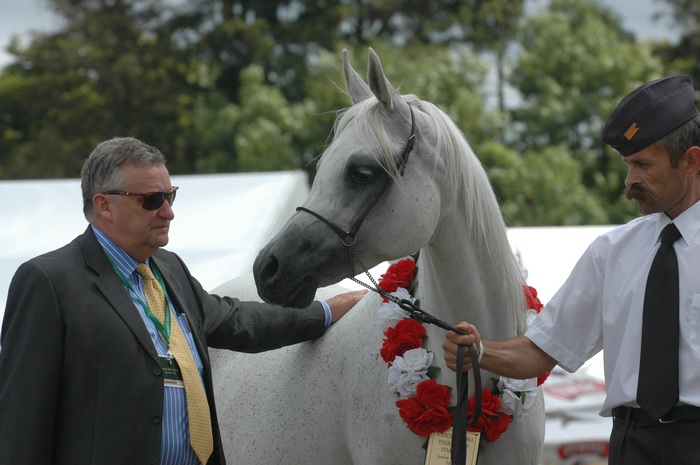
Large shows are judged differently than small ones. At large shows you have to choose excellent horses from a group of very good ones. At small shows the best horses immediately stand out. Polish judges are popular in the world, because they are not involved in any system, are not bound by private interests. We sell horses differently, not through trainers and handlers (who today usually also act as agents), but in the form of an auction. This is generally known, so we do not have to undertake discussions with the agents, explaining to them that we are not interested in their offer.
M.L.: A new season begins. Are you preparing a surprise in terms of breeding sires?
J.B.: Unfortunately I was not able to keep Laheeb longer, who left a group of distinguished mares. However he had large problems with the quality of the semen after his return from the US. We have about 20 breedings to QR Marc – we will see what they result in and whether he passes on those traits which I don’t like in him… There are also some plans regarding the lease of a stallion, but for now it is too early to speak about them. Each new season is a large unknown. And that’s the most interesting part of it all…


